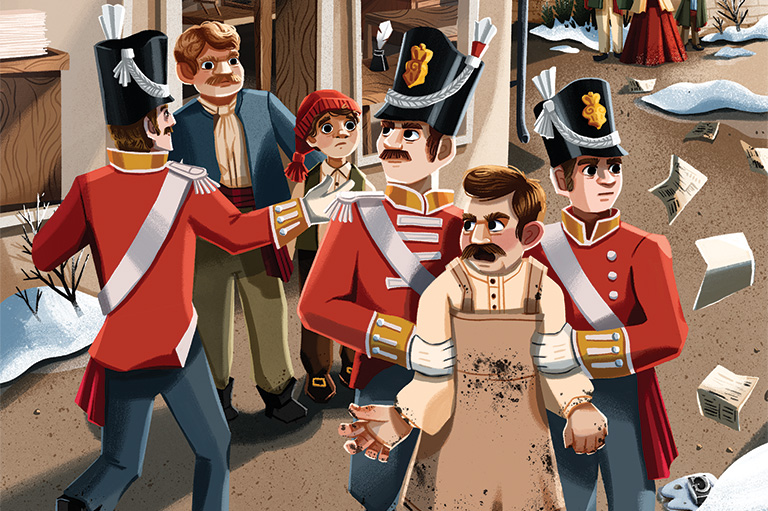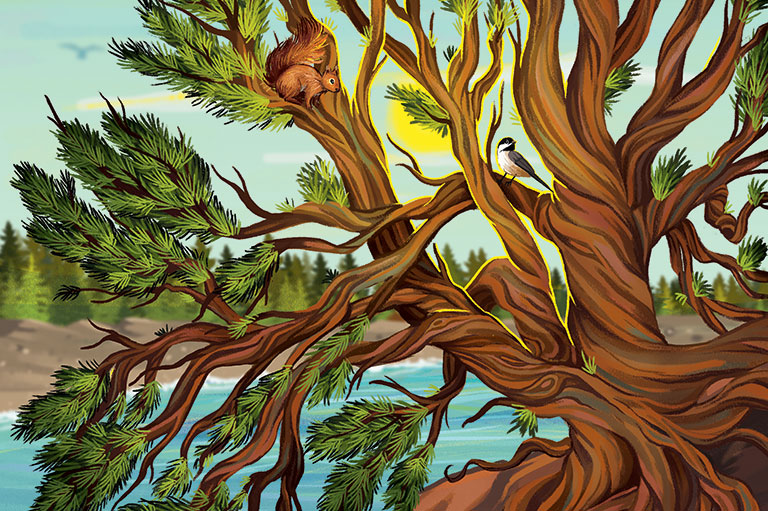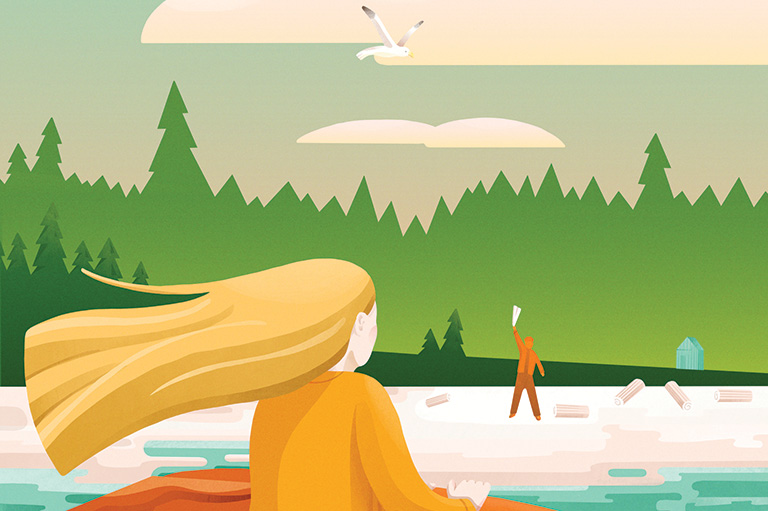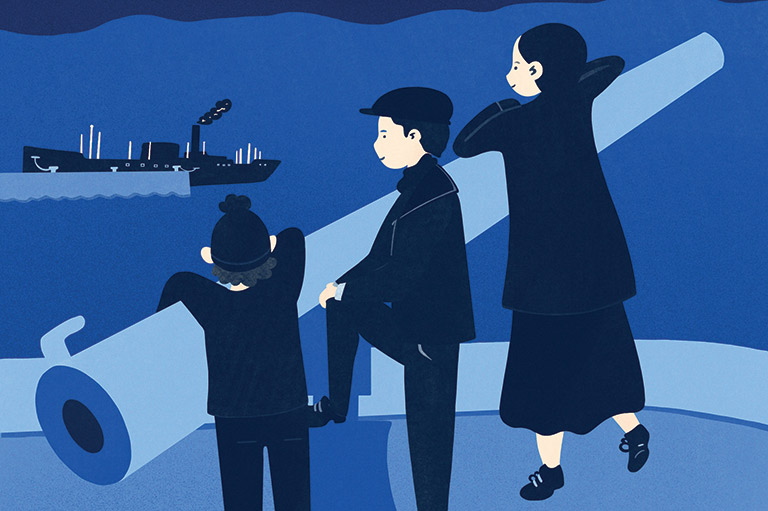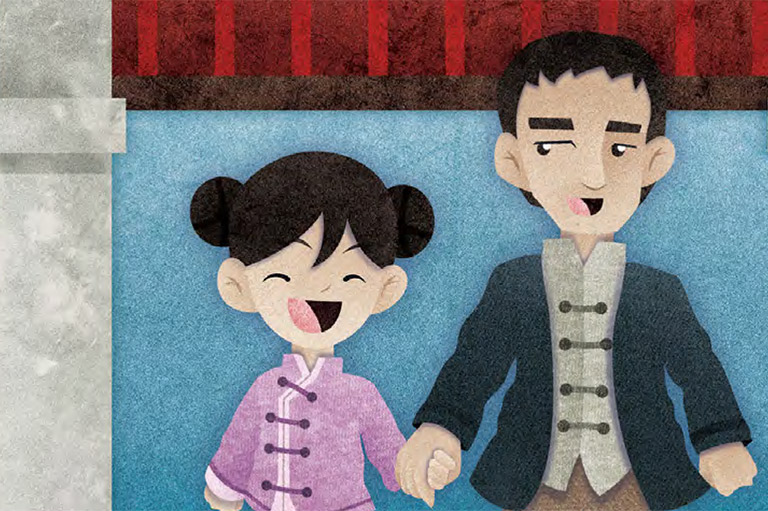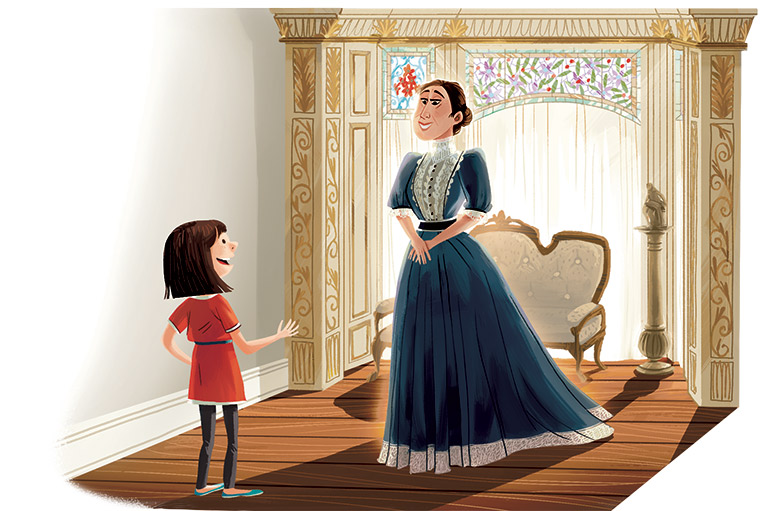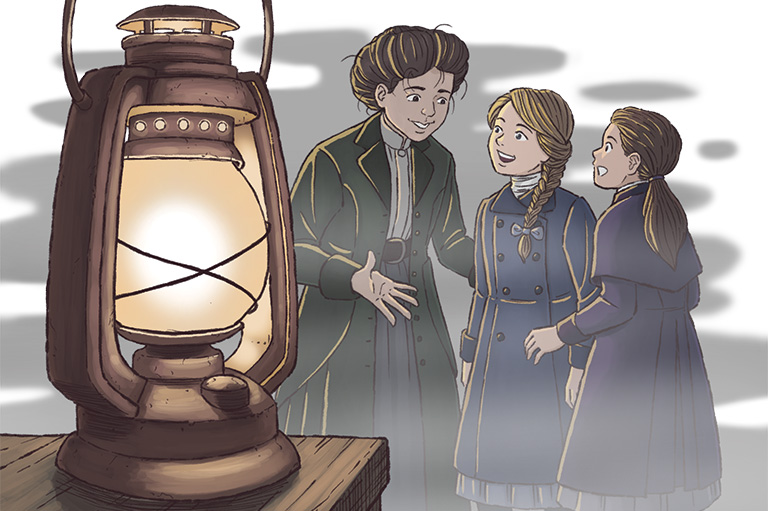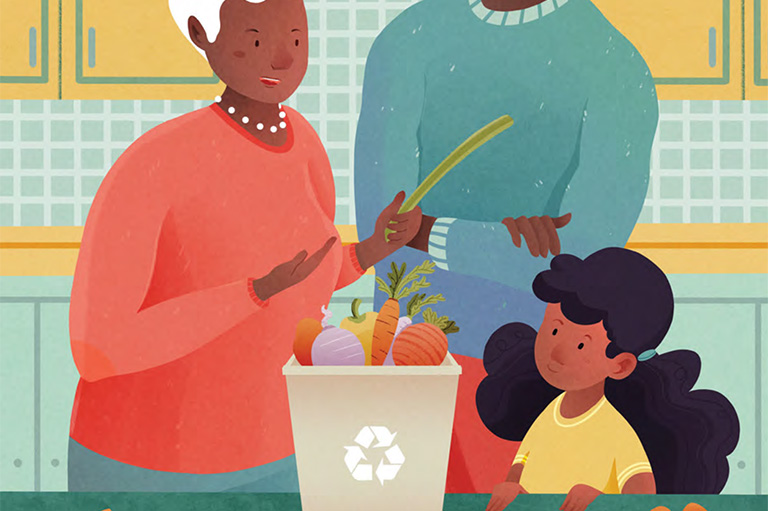Critter Predictors
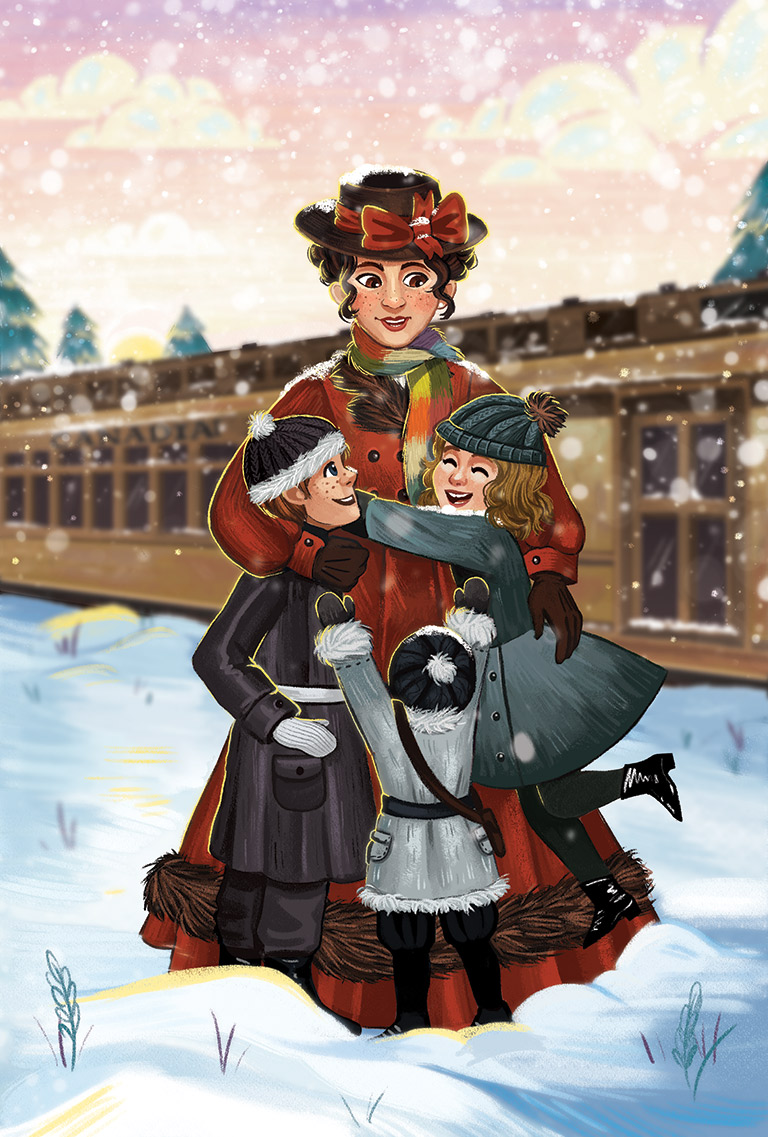
Maple Creek, Saskatchewan
January 1908
Skreeeeeee! Much as Anna loved watching the train pull into the station, she never got used to the squealing noise it made. Hands over her ears, she turned to her brother. “Now we’ll know for sure!” she shouted over the hissing of the engine.
David rolled his eyes. Anna never let him forget she was a year older. “No matter what she says, we’re definitely right,” he said to the small boy next to him.
Joseph nodded. “Definitely a bear.”
The wind knifing down Pacific Avenue made tears spring to the children’s eyes as they scanned the train, looking for the open door that would reveal the person they were waiting for. And there she was, all the way from Quebec!
“Aunt Valerie!” the three kids shouted, piling against the tall, laughing woman.
She quickly unwound her colourful wool scarf and threw it around her niece and nephews. “Caught you! Now you have to make me a cup of tea when we get to your house.”
Anna grabbed her aunt’s gloved hand with her own mittened one. “Only if you promise to settle the question we wrote you about.”
“My little geese, why didn’t you just ask your parents?” Valerie asked.
“We did!” David said. “They each gave us different answers. They said you would know for sure. Because you live back east.”
Valerie threw back her head with a huge laugh. “I think they were teasing you. And they may have been hinting that people who live where I do are know-it-alls, whether they’re professors like me or not.”
As they turned right, the buildings blocked the wind and everyone relaxed a little. “How did this big argument start, anyway?” the children’s aunt asked.
“Your letter said you were arriving today,” Anna said, “and you were leaving on — ”
Little Joseph piped up “On Bear Day!” He beamed at David.
“No!” Anna said. “On Groundhog Day!”
Finally they were home. The kids piled into the neat white house, nearly knocking their mother over. She hugged her sister fiercely and the two women cried and laughed to be seeing each other once again.
“You’re brave to come out when it’s so cold, but it’s wonderful that we have you for a whole month!” the children’s mother exclaimed.
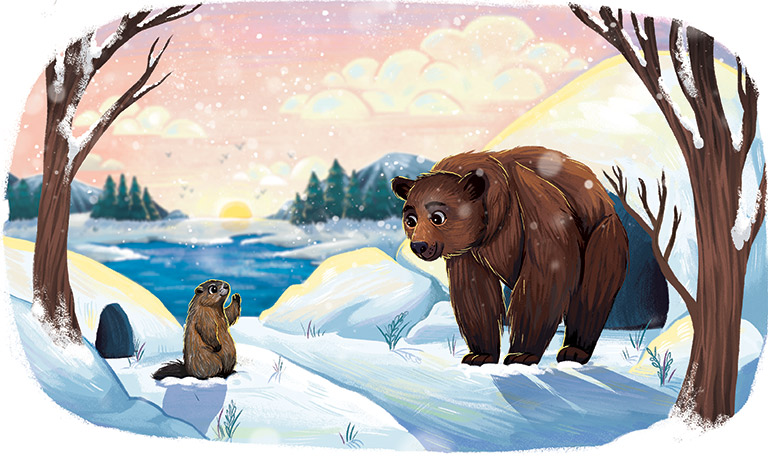
“That’s right!” Valerie said with a wink at her sister as she pulled off her boots and heavy coat. “From now until … ” The children waited eagerly for her next words “… February 2. You know — the day when that furry animal tells us how much more winter to expect.”
David groaned. “Yes, but which furry animal?”
Their mother sighed. “They’ve talked about nothing else for weeks, Val. Well, argued, really.”
Anna crossed her arms. “Everyone knows that February 2 is Groundhog Day. That’s what Papa says.”
David did the same. “And Mama agrees with Joseph and me. It’s Bear Day! The newspaper said so!”
As she put the kettle on the woodstove, their mother said over her shoulder, “Well, which is it, Val? You’ve lived in Ontario and now in Quebec, so you must know everything!”
Valerie plunked into a comfortable armchair and looked at the children. “When your letter arrived, I decided to ask a colleague at the university. It turns out … ” she paused for effect.
“What? What?” Joseph asked impatiently.
“You’re all correct,” their aunt said.
The kids’ faces showed their dismay.
“In the really old days, people watched for any hibernating creature to stick out its snout — a fox or a badger or a marmot.” David opened his mouth to object but his aunt held her hand up to shush him.
“February 2 started as a religious festival,” she continued. “Candlemas. Halfway through winter.” She glanced out the window where snowflakes had started to swirl.
“When they moved to Canada, people brought the idea of a weatherpredicting animal with them. There are lots of bears here and it was easy to see when they started coming out of their dens.” She smiled gratefully as her sister set down a pretty china cup of tea.
David made a face at Anna. “See? We’re right. February 2 in Canada is Bear Day and always will be.”
“So there!” Joseph added.
Valerie shrugged. “The Americans call it Groundhog Day and they seem to have made it into quite the occasion. Here in Canada, well, although I used to hear a lot more about the bear in February, the groundhog seems to be winning.”
Anna smiled a very superior oldersister smile, raised her eyebrows and said nothing.
“Is it true that everybody gathers round a groundhog’s hole to wait for it to come out and tell the weather?” the mother asked.
“You know Americans,” Valerie grinned. “They do enjoy making a fuss. And after all, you can pick up a groundhog and put it in a cage. Not so easy to do that with a bear.”
The snow was getting thicker now, and there was hardly anyone out walking. “All I know is that there’s still a lot of winter left,” Valerie said, setting down her tea cup, “and no animal you can think of is going to change that!”
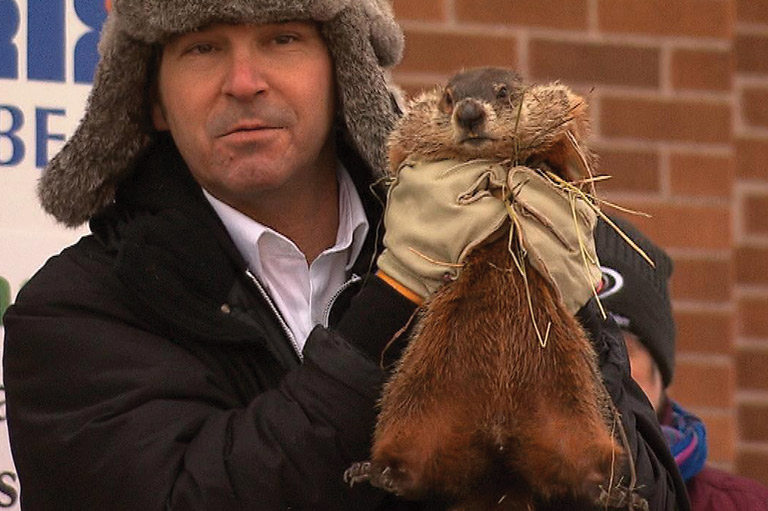
Of course we made up the characters in this story, but Candlemas Day and the debate over what to call February 2 are real. Before the late 1800s, Canadians would mostly have looked to the bear to “predict” how much longer winter would last based on whether it saw its shadow.
As Aunt Valerie said, February 2 was Groundhog Day in the U.S. by about 1900, and the name slowly spread through Canada. Some people objected — they saw the bear as more Canadian. But by the 1930s, the groundhog had pretty much won.
In 1956, Wiarton, Ont., started building a whole February celebration around a white groundhog known as Wiarton Willie.
If you want to know more, check out “The Battle for February 2” by Alan MacEachern.
Themes associated with this article
More fiction features
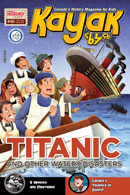
Canada’s History Archive features both English and French versions of Kayak: Canada’s History Magazine for Kids.
Kayak: Canada’s History Magazine for Kids — 3 digital issues per year for as low as $13.99. Tariff-exempt!

